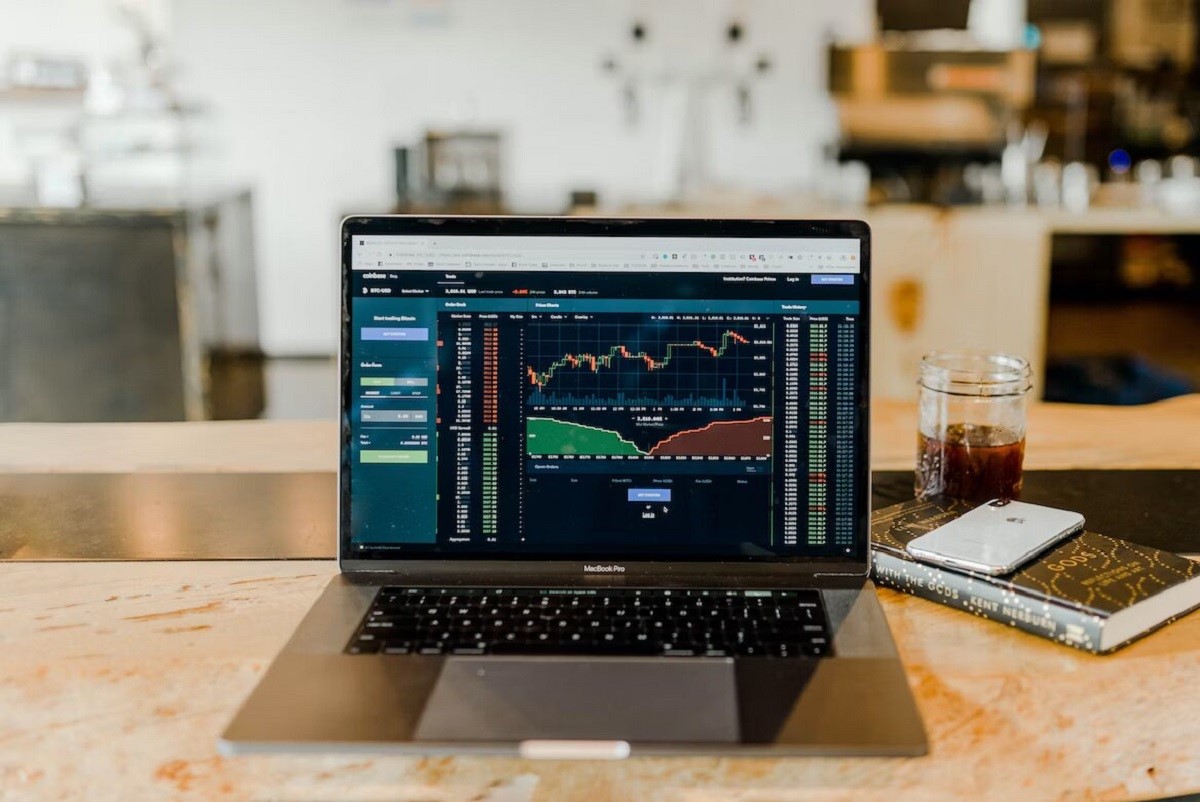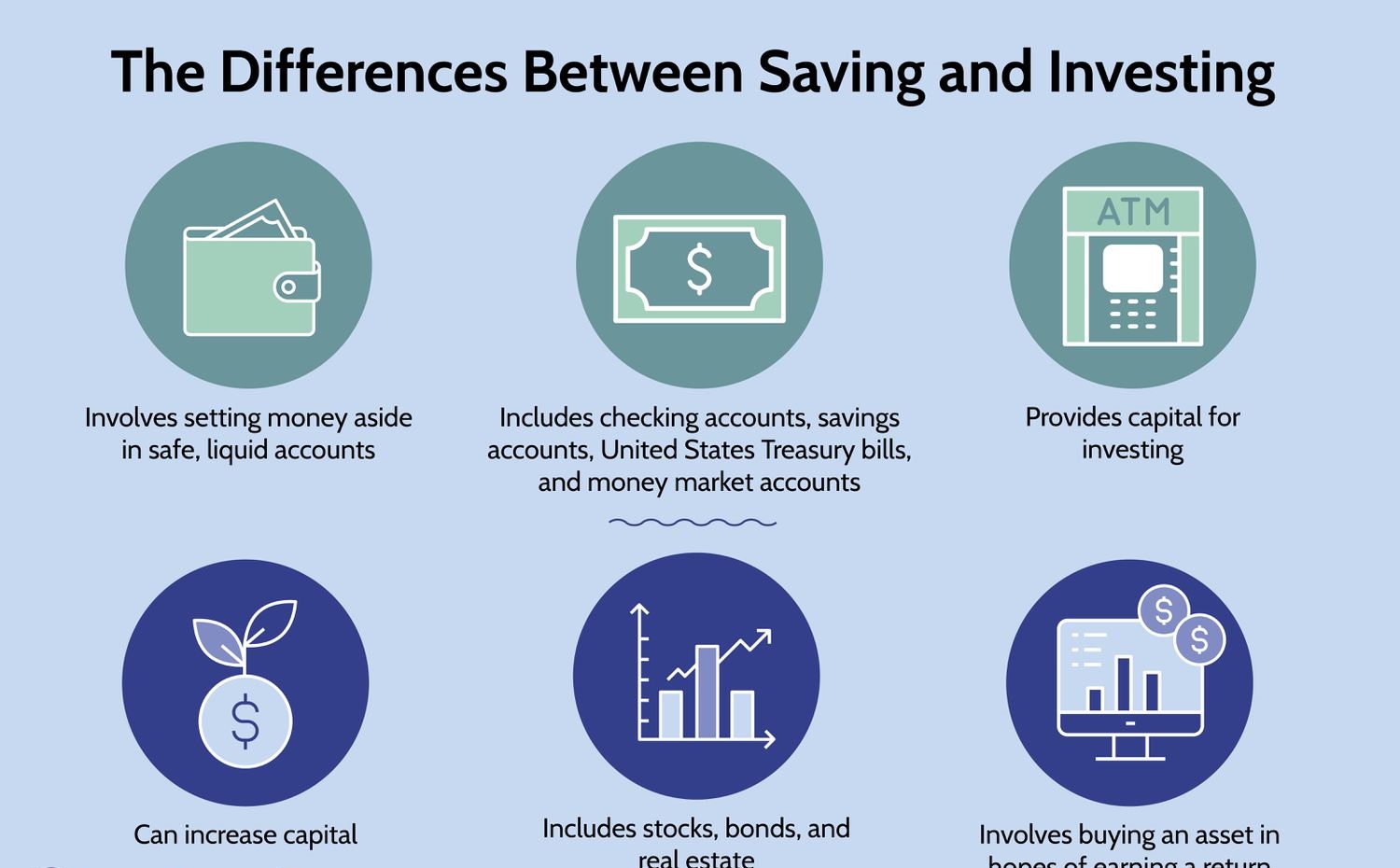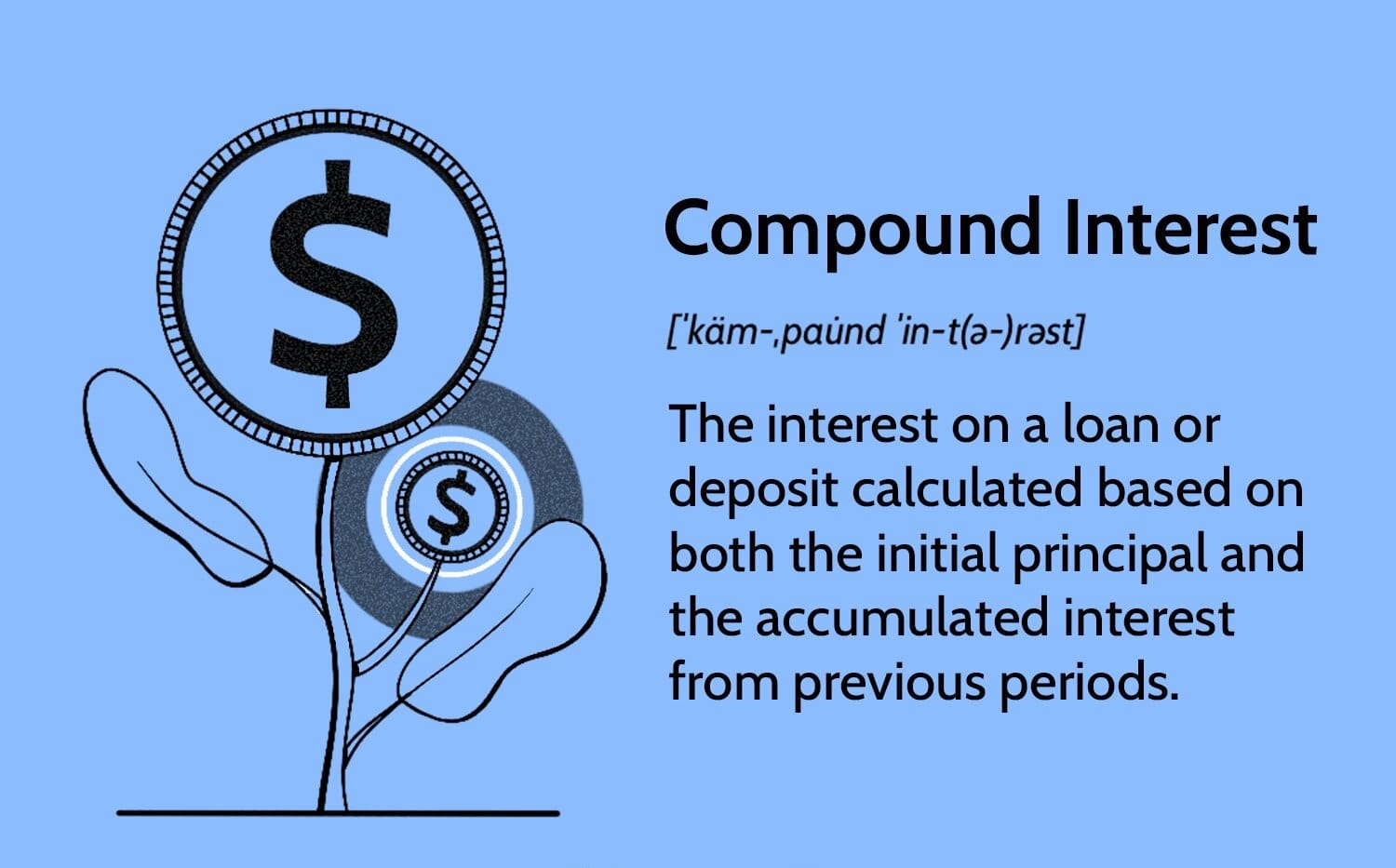Introduction
Investing is a key strategy for building wealth and securing a financially stable future. Whether you’re saving for retirement or planning for a major purchase, understanding the concept of compound interest is essential. Compound interest is the interest earned on both the initial investment and the accumulated interest from previous periods.
When it comes to compound interest, one question that often arises is how often investments compound. The frequency of compounding can significantly impact the growth of your investment over time. In this article, we will explore the different compounding frequencies and their implications.
Before diving into the details, let’s clarify what compound interest is and how it works.
Compound interest is the process of earning interest on both the principal amount and the accumulated interest. In simple terms, it means that your interest earns interest. This compounding effect helps your investment grow exponentially over time, as the interest is reinvested and generates even more interest.
So, how exactly does compound interest work?
Let’s say you invest $1,000 in an account that offers an annual interest rate of 5%. At the end of the first year, you would earn $50 in interest, bringing your total balance to $1,050. In the second year, that $1,050 would earn an additional 5% interest, resulting in $52.50. The cycle continues, and with each passing year, the interest earned becomes greater.
Now that we understand the basics of compound interest, let’s explore the frequency of compounding and how it can impact the growth of your investment.
Definition of Compound Interest
Compound interest is a concept in finance that refers to the interest earned not only on the initial investment but also on the accumulated interest from previous periods. It is a powerful force that allows investments to grow exponentially over time. Unlike simple interest, which is calculated only on the principal amount, compound interest takes into account the interest that has already been earned.
The formula for calculating compound interest is:
Compound Interest = P(1 + r/n)^(nt) – P
Where:
- P is the principal amount or initial investment
- r is the annual interest rate (expressed as a decimal)
- n is the number of times interest is compounded per year
- t is the number of years
Essentially, the more frequently the interest is compounded, the faster the investment will grow. This is because each compounding period allows for the reinvestment of previous interest earnings, resulting in a larger base for calculating future interest.
It’s important to note that compound interest can work to your advantage when you’re earning it, but it can also work against you when you’re borrowing. When borrowing money, compound interest can make your debt grow rapidly if left unpaid over a long period of time.
Understanding compound interest is crucial for making informed investment decisions and evaluating the potential returns on your investments. By harnessing the power of compound interest, you can make your money work harder for you and accelerate your path to financial success.
How Compound Interest Works
Compound interest works by reinvesting the earnings from the initial investment and the accumulated interest, allowing for exponential growth over time. It is often described as “interest on interest” because the interest earned in each compounding period is added to the principal, resulting in a larger base for calculating future interest.
Let’s break down the process of how compound interest works:
- Initial Investment: You start with an initial investment, also known as the principal amount. This could be the amount you deposit into a savings account or invest in a financial instrument such as stocks, bonds, or mutual funds.
- Interest Earned: The interest rate, expressed as a percentage, determines the amount of interest you will earn on your investment per period. The interest can be calculated yearly, semi-annually, quarterly, monthly, daily, or continuously, depending on the compounding frequency.
- Compounding Period: The compounding period refers to the frequency at which the interest is added to the principal. The more frequent the compounding, the faster the investment grows.
- Reinvestment: At the end of each compounding period, the earned interest is reinvested back into the investment, along with the principal. This forms a new base for the subsequent calculation of interest.
- Growth Over Time: As the interest continues to compound, the amount earned in each compounding period increases. Over time, the investment grows exponentially, allowing for significant wealth accumulation.
It’s important to note that the rate of growth depends not only on the interest rate but also on the frequency of compounding. The more often the interest compounds, the more significant the impact on the overall growth of the investment.
Understanding how compound interest works is crucial because it can greatly influence the growth potential of your investments. By leveraging the power of compound interest, you can maximize the returns on your investments and work towards achieving your financial goals.
Frequency of Compounding
The frequency of compounding refers to how often the interest is added to the principal amount and reinvested into the investment. It plays a crucial role in determining the growth rate of your investment and the overall impact of compound interest.
There are several common compounding frequencies used in financial institutions and investment vehicles. Let’s explore each of them:
Annual Compounding
Annual compounding means that the interest is added to the principal once a year. At the end of each year, the interest earned is reinvested, but no additional interest is added until the next compounding period. While annual compounding is the least frequent compounding frequency, it is still an effective way to grow your investment over time.
Semi-annual Compounding
Semi-annual compounding occurs twice a year, with interest being added to the principal every six months. This compounding frequency can accelerate the growth of your investment compared to annual compounding.
Quarterly Compounding
Quarterly compounding involves adding interest to the principal four times a year, at the end of each quarter. With more frequent compounding, the investment grows at a faster rate than semi-annual and annual compounding.
Monthly Compounding
Monthly compounding takes place every month, with the interest being added to the principal at the end of each month. Monthly compounding is a popular choice among financial institutions due to its balance between frequency and ease of calculation.
Daily Compounding
Daily compounding is when the interest is calculated and added to the principal on a daily basis. This compounding frequency offers the potential for significant growth in your investment, as even small daily interest amounts can compound over time.
Continuous Compounding
Continuous compounding is a theoretical concept where the interest is calculated and added to the principal continuously, without any specific compounding periods. It is represented by the mathematical constant “e” and is the highest compounding frequency in theory.
Each compounding frequency has its own advantages and considerations. While more frequent compounding can lead to faster growth, it may also involve more complex calculations and shorter investment terms. Determining the most suitable compounding frequency for your investment goals requires careful evaluation and consideration of your financial situation and risk tolerance.
Common Compounding Frequencies
When it comes to compounding interest, different institutions and financial instruments utilize various compounding frequencies. Let’s take a closer look at some of the common compounding frequencies used in the world of finance:
Annual Compounding
Annual compounding is the simplest and least frequent compounding frequency. Interest is added to the principal once a year at the end of the compounding period. This compounding frequency is commonly used in longer-term investments, such as bonds, certificates of deposit (CDs), and certain savings accounts.
Semi-annual Compounding
Semi-annual compounding occurs twice a year, with interest being added to the principal every six months. This compounding frequency is often used in fixed-income investments, such as corporate bonds and government bonds.
Quarterly Compounding
Quarterly compounding involves the addition of interest to the principal four times a year, at the end of each quarter. This compounding frequency is commonly found in certain savings accounts, money market accounts, and some mortgage loans.
Monthly Compounding
Monthly compounding takes place every month, with interest being added to the principal at the end of each month. This compounding frequency is widely used in savings accounts, money market accounts, car loans, and personal loans.
Daily Compounding
Daily compounding is when interest is calculated and added to the principal on a daily basis. This compounding frequency is commonly employed in high-yield savings accounts, certificates of deposit (CDs), and credit cards.
Continuous Compounding
Continuous compounding is a theoretical concept where interest is calculated and added to the principal continuously, without specific compounding periods. While continuous compounding is not commonly used in practice, it is often utilized in mathematical models and financial calculations.
It’s important to note that the choice of compounding frequency can significantly impact the growth of your investment. Generally, more frequent compounding leads to faster growth due to the more rapid accumulation of interest. However, it’s also essential to consider the practical aspects, such as the ease of calculation and the availability of investment options with the desired compounding frequency.
Understanding the common compounding frequencies will help you make informed decisions when choosing investment products or considering the impact of compounding on your savings or loans.
Annual Compounding
Annual compounding is a compounding frequency where interest is added to the principal once a year. It is one of the simplest and least frequent compounding frequencies, but it still has a significant impact on the growth of your investment over time.
In annual compounding, the interest earned throughout the year is not added to the principal until the end of the compounding period. This means that the interest does not compound throughout the year but is added to the principal as a lump sum at the end.
While annual compounding may result in slower growth compared to more frequent compounding frequencies, it is still an effective way to grow your investment over the long term. This compounding frequency is commonly seen in various financial products, including bonds, long-term savings accounts, and certain types of investments with fixed interest rates.
One advantage of annual compounding is its simplicity. Since the interest is added to the principal only once a year, it requires less frequent tracking and calculation compared to more frequent compounding periods. This makes it easier to understand and plan for the growth of your investment.
However, it’s important to note that annual compounding may not maximize the growth potential compared to more frequent compounding frequencies. With annual compounding, the interest has a longer period to sit in the account without compounding. This can delay the growth of your investment compared to shorter compounding periods, where the interest is reinvested more frequently.
When considering investments that offer annual compounding, it’s crucial to evaluate the annual interest rate, as well as the potential for compounding over several years. While the growth may appear slower initially, the compounding effect can become more significant over time as the interest continues to add up and the investment base grows.
Ultimately, the choice of compounding frequency depends on your investment goals, risk tolerance, and the available options. If you prefer a straightforward approach and are focused on long-term growth, annual compounding may be a suitable choice. However, if you are seeking faster growth and have the ability to monitor and manage more frequent compounding, you may consider exploring investment options with shorter compounding periods.
Understanding the impact of annual compounding will help you make informed decisions when selecting investment products and grow your wealth effectively over time.
Semi-annual Compounding
Semi-annual compounding is a compounding frequency where interest is added to the principal twice a year. It offers a middle ground between annual compounding and more frequent compounding periods, providing a balance between simplicity and faster growth.
In semi-annual compounding, the interest earned during each six-month period is added to the principal at the end of that period. This means that the interest earned in the first six months is not compounded until the end of six months, and the same process is repeated for the second six-month period.
Semi-annual compounding is commonly used in fixed-income investments, such as corporate bonds and government bonds. These investments often pay interest on a semi-annual basis, aligning with the compounding frequency.
One advantage of semi-annual compounding is that it provides a more frequent opportunity for the interest to reinvest and compound compared to annual compounding. With interest being added to the principal every six months, the investment grows faster than with annual compounding.
Another benefit of semi-annual compounding is that it still maintains a level of simplicity compared to more frequent compounding periods. While it requires tracking the interest earned over each six-month period, it is less frequent than monthly or daily compounding, making it more manageable for some investors.
However, it’s important to note that semi-annual compounding may not result in the same level of growth as more frequent compounding frequencies. Since the interest is added only twice a year, the compounding effect is less frequent compared to shorter compounding periods. This can lead to slower growth compared to investments with monthly or daily compounding.
When considering investments that offer semi-annual compounding, it’s crucial to evaluate the annual interest rate, as well as the potential for compounding over several years. While the growth may be slower compared to more frequent compounding, semi-annual compounding can still generate significant returns over the long term.
Ultimately, the choice of compounding frequency depends on your investment goals and risk tolerance. If you prefer a balance between simplicity and growth, semi-annual compounding may be a suitable choice. However, if you are seeking faster growth and can handle more frequent compounding, you may consider exploring investments with shorter compounding periods.
Understanding the impact of semi-annual compounding will help you make informed decisions when selecting investment products and optimize your wealth accumulation over time.
Quarterly Compounding
Quarterly compounding is a compounding frequency where interest is added to the principal four times a year, at the end of each quarter. It provides a more frequent opportunity for the interest to compound compared to annual and semi-annual compounding, resulting in faster growth of your investment over time.
In quarterly compounding, the interest earned during each quarter is added to the principal at the end of that quarter. This means that the interest earned in the first three months is not compounded until the end of the quarter, and the same process is repeated for the subsequent quarters throughout the year.
Quarterly compounding is commonly used in various financial products, including certain savings accounts, money market accounts, and mortgage loans. The compounding period aligns with the interest payment schedule of these products.
One advantage of quarterly compounding is that it allows for more frequent compounding compared to annual and semi-annual compounding. With interest being added to the principal every three months, the investment has additional opportunities to grow faster.
Another benefit of quarterly compounding is the relatively simple calculation involved. While more frequent than annual or semi-annual compounding, the calculation of interest earned and added to the principal is still manageable for most investors.
However, it’s important to note that the growth potential with quarterly compounding is slower compared to more frequent compounding frequencies. Since the interest is added only four times a year, the reinvestment of interest is not as frequent as in monthly or daily compounding, which can result in slower growth over time.
When considering investments that offer quarterly compounding, it’s crucial to evaluate the annual interest rate and the potential compounding effect over several years. Although the growth may be slower compared to more frequent compounding, quarterly compounding can still generate notable returns in the long run.
Ultimately, the choice of compounding frequency depends on your investment goals, risk tolerance, and the available options. If you seek a balance between frequent compounding and simplicity, quarterly compounding may be a suitable choice. However, if you desire even faster growth and are comfortable with more frequent compounding, you may consider exploring investments with monthly or daily compounding.
Understanding the impact of quarterly compounding will help you make informed decisions when selecting investment products and harness the power of compounding for optimal wealth accumulation over time.
Monthly Compounding
Monthly compounding is a compounding frequency where interest is added to the principal at the end of each month. It offers a more frequent opportunity for the interest to compound compared to annual, semi-annual, and quarterly compounding. This frequency can accelerate the growth of your investment over time.
In monthly compounding, the interest earned during each month is added to the principal at the end of that month. This means that the interest earned in the first month is reinvested and compounded at the end of the month, and the same process is repeated for each subsequent month throughout the year.
Monthly compounding is widely used in savings accounts, money market accounts, personal loans, and car loans. The compounding period aligns with the monthly interest calculations and payment schedules of these financial products.
One significant advantage of monthly compounding is that it allows for the most frequent compounding compared to annual, semi-annual, and quarterly compounding. With interest being added to the principal every month, the investment has more frequent opportunities to grow faster and accumulate greater returns.
Another benefit of monthly compounding is the potential for increased compounding effect. With the interest being reinvested every month, the investment base grows at a faster rate, resulting in exponential growth over time.
However, it’s important to note that the calculation involved in monthly compounding can be slightly more complex compared to less frequent compounding frequencies. With each additional compounding period, there are more calculations required for interest earned and added to the principal. Nonetheless, many financial institutions and calculators provide easy-to-use tools and formulas for accurate calculations.
When considering investments or loans that offer monthly compounding, it’s crucial to evaluate the annual interest rate and the compounding effect over several years. Monthly compounding can significantly enhance the growth of your investment compared to less frequent compounding, and the impact can become even more substantial over long-term investments.
Ultimately, the choice of compounding frequency depends on your investment goals, risk tolerance, and the available options. If you desire faster growth and are comfortable with more frequent compounding calculations, monthly compounding may be a suitable choice. However, if simplicity is a priority, you may consider investments with less frequent compounding frequencies.
Understanding the impact of monthly compounding will help you make informed decisions when selecting investment products and take full advantage of compounding to accelerate your wealth accumulation over time.
Daily Compounding
Daily compounding is a compounding frequency where interest is calculated and added to the principal on a daily basis. It offers the most frequent compounding opportunity among common compounding frequencies, leading to faster growth and increased potential returns on your investment.
In daily compounding, the interest earned each day is added to the principal at the end of that day. This means that the interest earned on the first day is reinvested and compounded at the end of the day, and the same process is repeated for each subsequent day throughout the year.
Daily compounding is commonly found in high-yield savings accounts, money market accounts, some certificates of deposit (CDs), and certain credit cards. This compounding frequency allows for more rapid growth of your investment and the potential for significant wealth accumulation over time.
One significant advantage of daily compounding is the highest frequency of compounding compared to other compounding frequencies. With daily compounding, your investment benefits from the compounding effect the most frequently, resulting in more rapid growth and the potential for greater returns.
Another benefit of daily compounding is the compounding effect on even small daily interest amounts. Each day, even a small interest amount gets added to the principal and has the opportunity to contribute to exponential growth over time.
However, it’s important to note that daily compounding calculations may require more frequent tracking and complex calculations compared to less frequent compounding frequencies. With each day introducing a new compounding period, it’s important to use accurate formulas and tools to ensure precise calculations.
When considering investments or loans that offer daily compounding, it’s crucial to evaluate the annual interest rate and the potential growth over time. The compounding effect of daily compounding can be especially powerful for long-term investments and high-interest savings accounts.
Ultimately, the choice of compounding frequency depends on your investment goals, risk tolerance, and the available options. If you seek the highest potential for growth and are comfortable with more frequent calculations, daily compounding may be a suitable choice. However, if simplicity is a priority, you may opt for investments with less frequent compounding frequencies.
Understanding the impact of daily compounding will help you make informed decisions when selecting investment products and maximize the potential for exponential growth and wealth creation over time.
Continuous Compounding
Continuous compounding is a theoretical concept in finance where interest is calculated and added to the principal continuously, without specific compounding periods. While not commonly used in practice, continuous compounding is a concept that highlights the highest compounding frequency, offering the potential for exponential growth.
In continuous compounding, the formula used to calculate interest is derived from the mathematical constant “e,” which represents the base of natural logarithms. The formula for continuous compounding is as follows:
A = P * e^(rt)
Where:
- A is the final amount or balance
- P is the principal amount
- e is the mathematical constant approximately equal to 2.71828
- r is the annual interest rate (expressed as a decimal)
- t is the number of years
Continuous compounding offers the highest potential for growth compared to other compounding frequencies because the interest is being calculated and added to the principal continuously. This means that the investment grows at a constant rate, compounding infinitely throughout the year.
While continuous compounding is a theoretical concept, it has real-world implications. It demonstrates that the more frequent the compounding, the greater the growth potential of your investment. Continuous compounding represents the extreme end of this spectrum, highlighting the maximum possible growth.
Although continuous compounding is not commonly used in practical financial products, it is employed in mathematical models and formulas to showcase the most favorable outcome. It helps financial analysts and economists understand the ideal scenario, while also highlighting the compounding effect and growth potential in more realistic compounding frequencies.
When considering investments or loans in practice, it’s essential to evaluate compounding frequencies such as annual, semi-annual, quarterly, monthly, or daily, as these provide a more tangible representation of compounding. Continuous compounding serves as a theoretical benchmark, reminding us of the growth potential offered by more frequent compounding frequencies.
Understanding the concept of continuous compounding can help you appreciate the power of compounding and make informed decisions when selecting investments or analyzing the potential growth of your wealth over time.
Why Compound Interest Matters
Compound interest plays a significant role in personal finance and investing, making it a crucial concept to understand. It has the potential to greatly impact your wealth accumulation and financial well-being over time. Here are several reasons why compound interest matters:
Growth of Investments
Compound interest allows your investments to grow exponentially over time. As the interest earned is reinvested and added to the principal, it creates a compounding effect that accelerates the growth of your investment. The longer the investment horizon, the more significant the impact of compound interest on its growth potential.
Building Wealth
By harnessing the power of compound interest, you can effectively build wealth over time. Whether it’s through long-term investments, retirement savings, or other financial instruments, compound interest enables your money to work for you and generate substantial returns. The earlier you start investing, the more time your investments have to compound and grow.
Time Value of Money
Compound interest demonstrates the concept of the time value of money. In essence, it highlights that money today is worth more than the same amount of money in the future. This is because money today has the potential to earn interest and grow over time through compounding. Understanding the time value of money can help you make better financial decisions and prioritize long-term investments.
Retirement Planning
Compound interest is particularly important in retirement planning. By starting early and consistently saving and investing, you can take advantage of compound interest to build a sizable retirement nest egg. The compounding effect over several decades can ensure that your investments grow and provide a comfortable retirement income.
Debt Accumulation
While compound interest can work in your favor when investing, it can also work against you when borrowing. Compound interest on debt can rapidly accumulate, especially if left unpaid over a long period. It’s essential to understand the terms and conditions of loans and credit cards, including the interest rates and compounding frequencies, to avoid excessive debt accumulation.
Long-Term Financial Goals
Compound interest is a powerful tool for achieving long-term financial goals. Whether it’s buying a home, paying for your children’s education, or starting a business, the compounding effect can contribute significantly to your ability to fund these goals. By making regular contributions and taking advantage of compound interest, you can make your money work harder for you and achieve your aspirations.
In summary, compound interest matters because it has the potential to significantly impact your financial growth, wealth accumulation, retirement planning, and overall financial well-being. By understanding the concept and leveraging it effectively through investments and savings, you can optimize your financial journey and secure a more prosperous future.
Comparing Different Compounding Frequencies
When it comes to compounding interest, the frequency at which interest is added to an investment or loan can have a significant impact on its growth or cost. Let’s compare the different compounding frequencies and examine how they affect the outcome:
Growth Potential
The compounding frequency directly affects the growth potential of an investment. Generally, the more frequent the compounding, the faster the investment grows. Compounding more frequently means that interest is added to the principal more often, allowing for greater compounding effect and exponential growth over time. Investments with daily or monthly compounding have the highest growth potential, while annual compounding has the slowest growth rate.
Interest Calculation
Compounding frequency also affects how interest is calculated. With more frequent compounding, interest is calculated on a smaller base more frequently. This can result in slightly higher interest earnings compared to less frequent compounding. For example, daily compounding may result in slightly more interest earned compared to monthly or annual compounding due to the more frequent accumulation of interest.
Comparing Rates
When comparing interest rates between different compounding frequencies, it’s essential to consider the equivalent annual percentage yield (APY). APY standardizes the interest rate calculation across different compounding frequencies, allowing for an apples-to-apples comparison. For example, an investment with an annual interest rate of 5% compounded monthly would have a higher APY than an investment with the same interest rate compounded annually.
Simplicity and Ease of Calculation
Less frequent compounding frequencies, such as annual or semi-annual, offer simplicity and ease of calculation. Since interest is added to the principal less frequently, tracking and calculating the growth of the investment becomes simpler. On the other hand, more frequent compounding, such as daily or monthly, requires more frequent calculation and tracking, which may be more complex.
Investment Liquidity
Compounding frequency can also impact investment liquidity. Some investment products that offer higher compounding frequencies, such as daily compounding, may have restrictions on withdrawals or penalties for early withdrawals. This is important to consider if you anticipate needing access to your funds in the near future. Investments with less frequent compounding may have more flexible withdrawal options.
When comparing different compounding frequencies, it’s important to consider your investment goals, risk tolerance, and the available options. More frequent compounding generally provides faster growth potential but may involve more complex calculations and shorter investment terms. Less frequent compounding offers simplicity and ease of calculation but may result in slower growth. Evaluating your financial situation and preferences will help you determine the most suitable compounding frequency for your investments or loans.
Finding the Most Suitable Compounding Frequency
Choosing the most suitable compounding frequency for your investments or loans depends on various factors, including your financial goals, risk tolerance, timeline, and the available options. Here are some considerations to help you determine the ideal compounding frequency:
Investment Goals
Consider your investment goals and timeframe. If you have long-term goals, such as retirement planning, you may benefit from more frequent compounding frequencies like daily or monthly. These compounding frequencies have higher growth potential over extended periods. For shorter-term goals, less frequent compounding frequencies like annual or semi-annual may be sufficient.
Risk Tolerance
Assess your risk tolerance when choosing the compounding frequency. Higher compounding frequencies, such as daily or monthly, generally offer a higher growth potential but may involve more volatility and risk. Less frequent compounding frequencies provide more stability but may lead to slower growth over time. Consider your comfort level with fluctuations in your investment and choose a frequency that aligns with your risk tolerance.
Ease of Tracking
Consider the ease of tracking and calculating the growth of your investment. Less frequent compounding frequencies, such as annual or semi-annual, simplify tracking and require fewer calculations. If you prefer a more straightforward approach or have limited time for financial management, these frequencies may be more suitable. On the other hand, if you are comfortable with frequent calculations and monitoring, you can opt for more frequent compounding frequencies.
Available Options
Take into account the compounding frequencies offered by financial institutions and investment products. While you may have a preference for a specific frequency, it ultimately depends on the options available to you. Evaluate different products and accounts, compare interest rates, fees, and withdrawal restrictions to find the most suitable compounding frequency that aligns with your financial needs and preferences.
Comparing Growth Potential
Compare the growth potential of different compounding frequencies by analyzing data such as the Annual Percentage Yield (APY). The APY allows for an accurate comparison of growth rates across different compounding frequencies. This analysis can help you determine the frequency that provides the desired level of growth for your investments.
Keep in mind that there is no one-size-fits-all answer to the most suitable compounding frequency. It depends on your personal circumstances, objectives, and available options. By considering your investment goals, risk tolerance, ease of tracking, available options, and growth potential, you can make an informed decision on the compounding frequency that best aligns with your financial needs and aspirations.
Conclusion
Understanding the concept of compound interest and the impact of different compounding frequencies is crucial for successful financial planning and investment strategies. Compound interest allows your investments to grow exponentially over time, with the interest earned being reinvested and generating even more interest. The choice of compounding frequency, whether it be annual, semi-annual, quarterly, monthly, daily, or continuous, can significantly impact the growth potential of your investment.
Annual compounding, the least frequent frequency, provides a straightforward approach and is common in long-term investments such as bonds and certain savings accounts. Semi-annual compounding strikes a balance between simplicity and faster growth, often used in fixed-income investments. Quarterly compounding offers a more frequent compounding opportunity, while monthly compounding accelerates growth further. Daily compounding provides the most frequent compounding and offers the highest growth potential, although it involves more complex calculations. Continuous compounding, while a theoretical concept, represents the maximum growth potential among compounding frequencies.
Each compounding frequency has its benefits and considerations, including growth potential, ease of calculation, available investment options, and risk tolerance. Evaluating your investment goals, considering the time horizon, and assessing your comfort with risk and complexity will help you determine the most suitable compounding frequency for your financial journey.
Compound interest plays a crucial role in building wealth, achieving long-term financial goals, and retirement planning. It emphasizes the time value of money and demonstrates the power of interest on interest. By harnessing the potential of compound interest and selecting the optimal compounding frequency, you can maximize the growth of your investments and work towards securing a financially stable future.
Remember, each individual’s financial situation is unique, and the decision on compounding frequency should align with your specific goals and circumstances. By understanding compound interest and the implications of different compounding frequencies, you can make informed decisions and leverage this financial concept to your advantage.

























